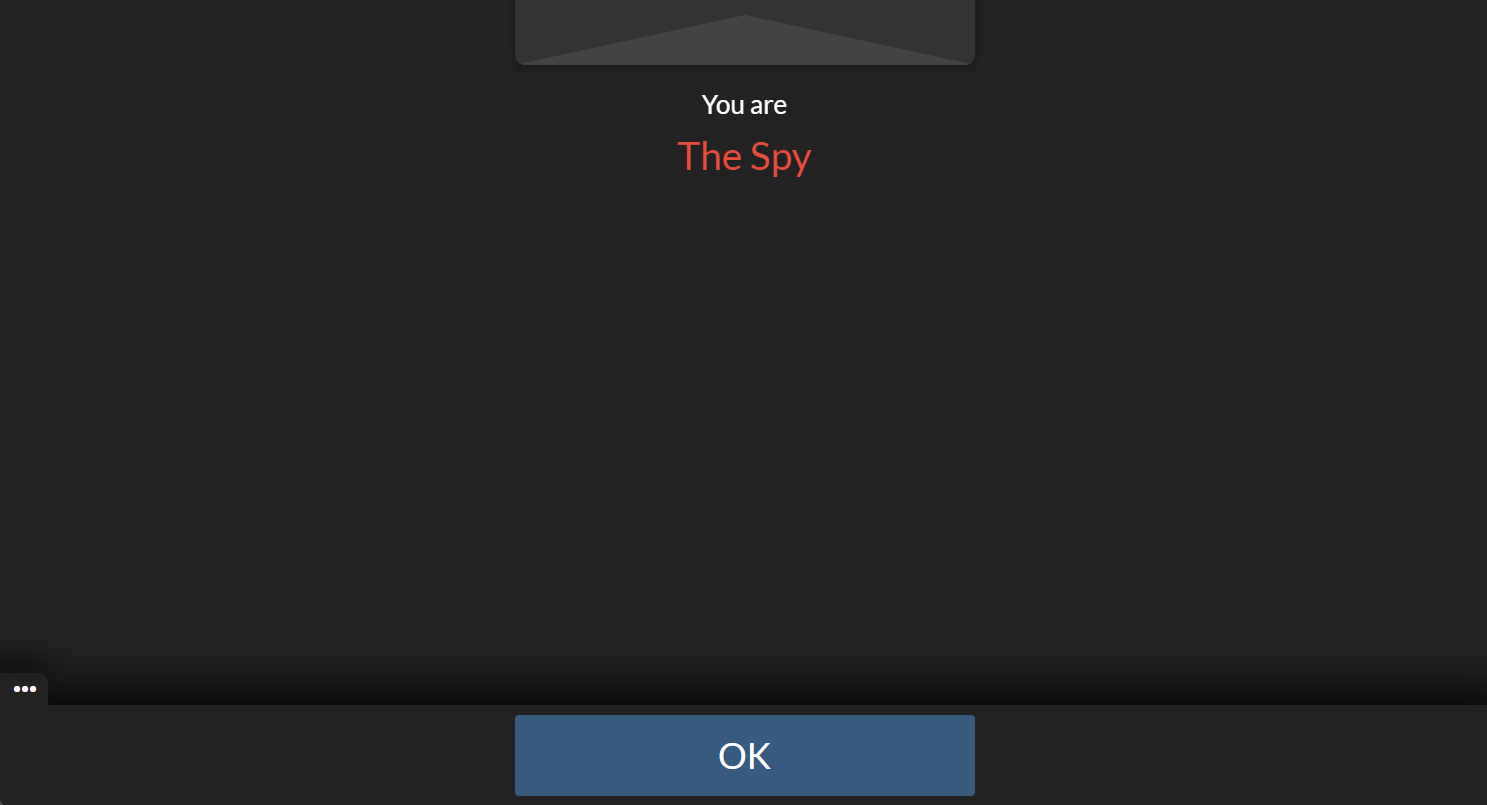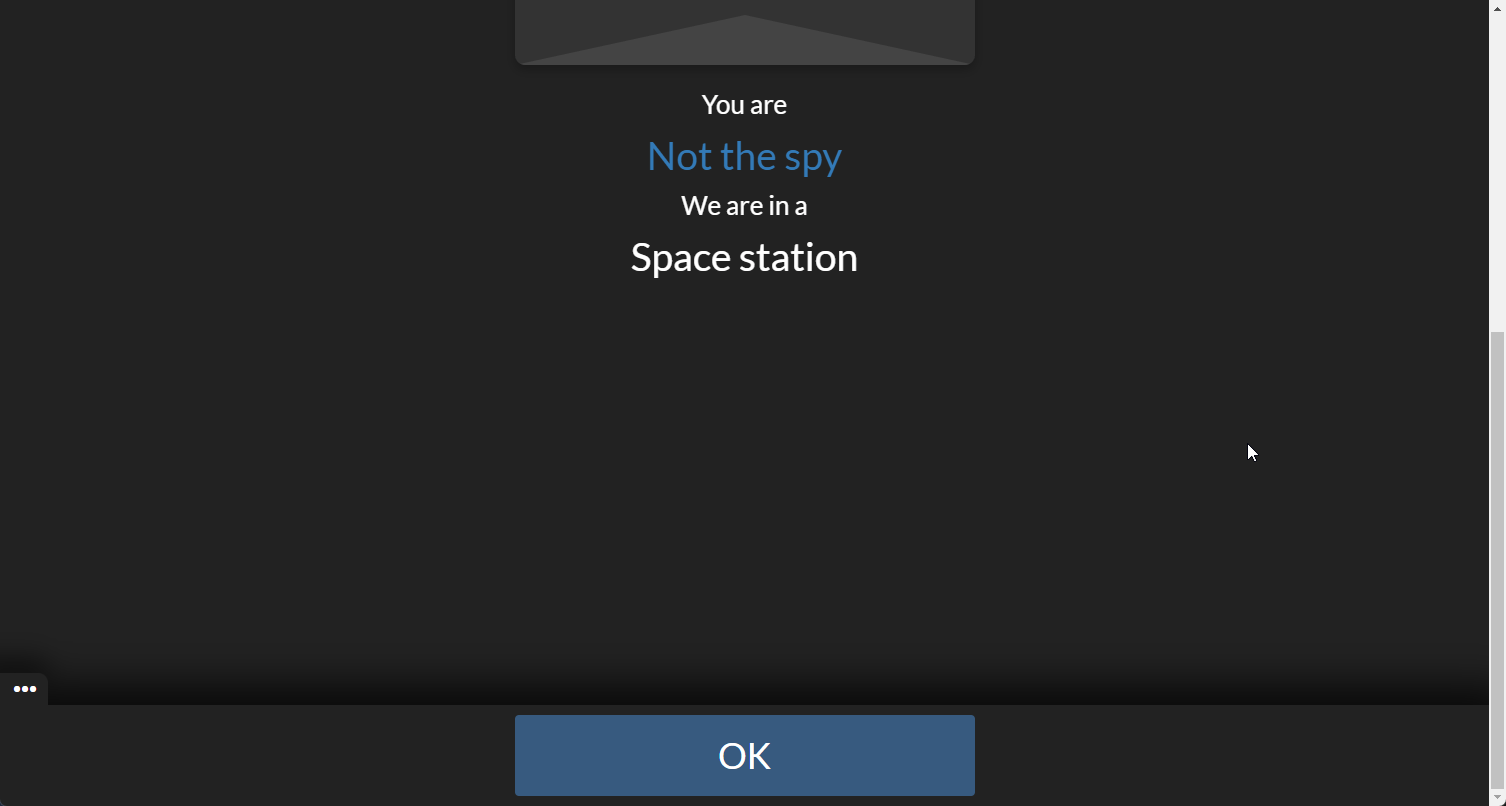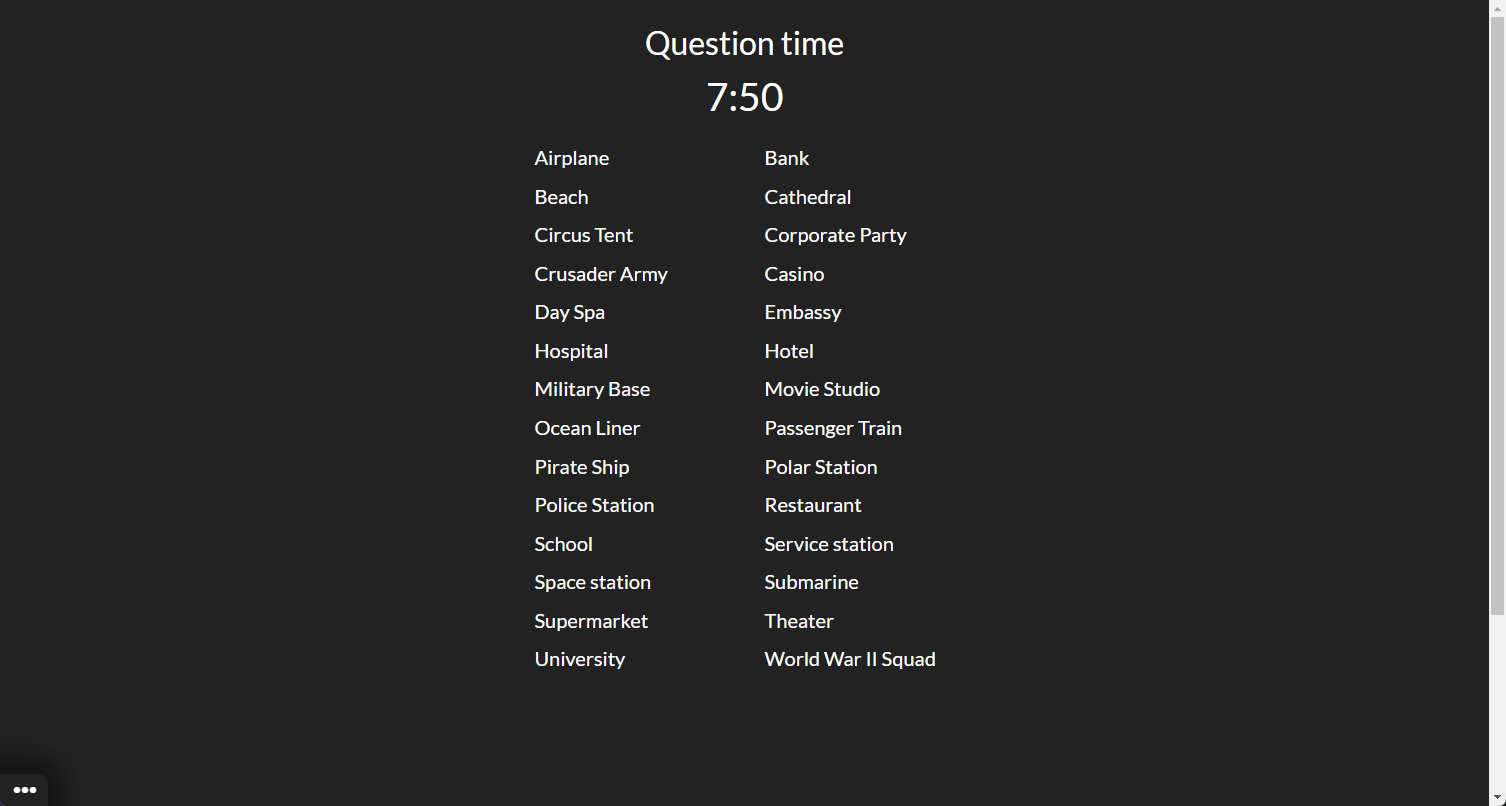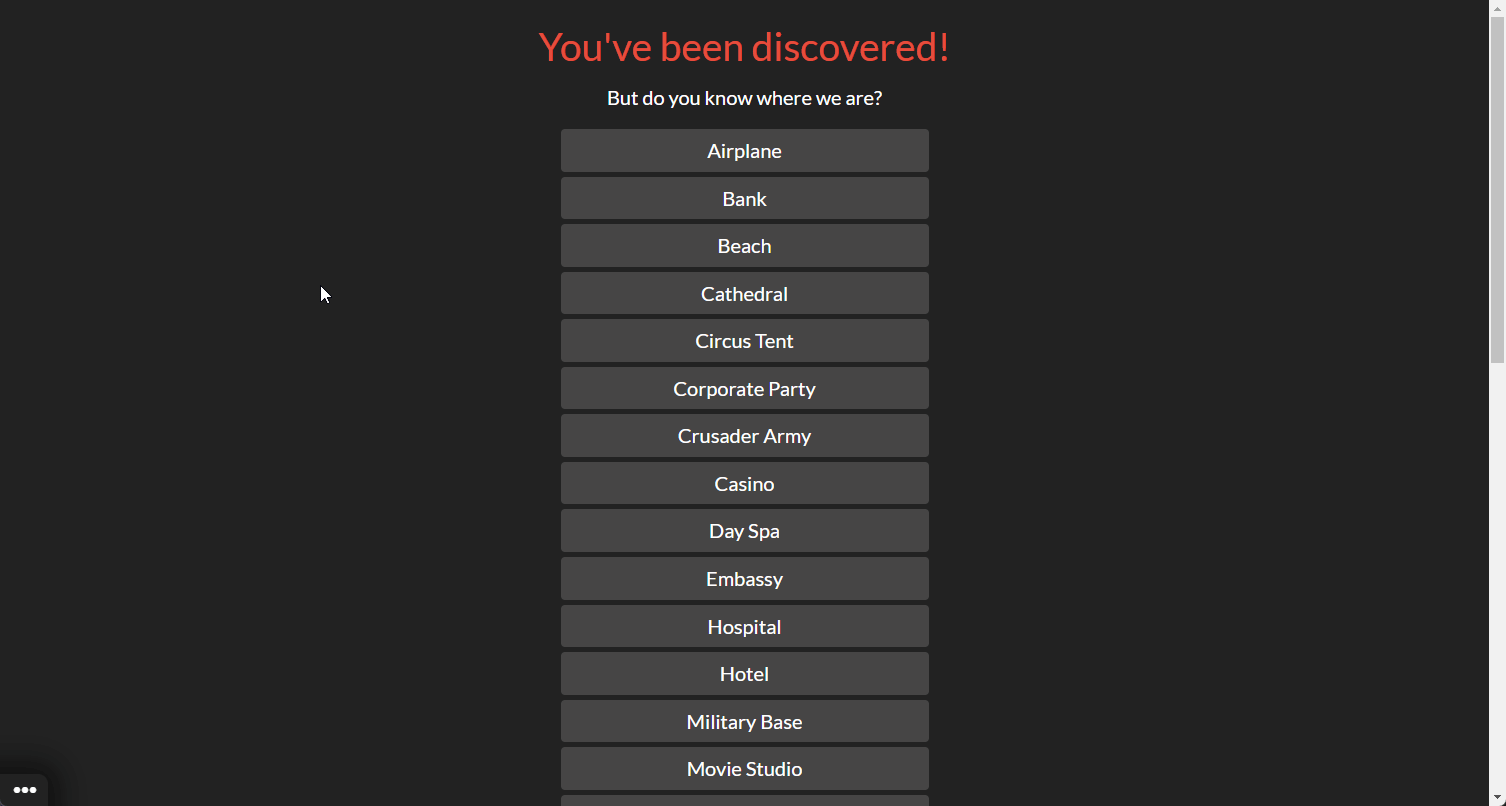Spyfall

The game I decided to play and analyze is Spyfall. Though the game was originally a 2014 card game designed by Alexandr Ushan and published by Hobby World, the game is now accessible on a multitude of online platforms, such as netgames.io which is where my friends and I decided to play it on.
Target Audience
The original card game and many online platforms market the game for ages 13 and up, but the game can definitely be played by even younger audiences. The game’s target audience seems to just be anyone who has knowledge about the locations in the game, is able to lie effectively, and is able to ask deducing questions to others.
Notable Elements
- Number of players: 3-8 players
- Actions players can take: All players ask questions to one another and answer the questions they are asked. The players who are not the spy want to show that they know the secret location, but do not want to give out so much information that the spy figures out the location as well. The non-spies are also trying to deduce who the spy is. The spy wants to answer questions in a convincing way to keep suspicion off of them and/or figure out the secret location.
- Rounds:
On the website we played on, everyone first joins the game lobby. When everyone is in, the creator of the lobby starts the game and all players are either given the secret location or the role of the spy.


There is then a 8 minute questioning round where all players ask each other questions. We played the version where any type of question can be asked (instead of just yes/no questions).

At any time during the questioning round, the spy is able to out themselves and guess the secret location. If they guess right, the game ends and they win, but if they guess wrong, they lose (the website didn’t actually have this functionality, so if this happened we left and started a new lobby).If the questioning round ends without the spy guessing the location, all players then go into a voting round where they vote who they think the spy is. The rules originally call for a unanimous vote, but we played so that the player with the majority vote was deemed the spy.

If the spy is voted incorrectly, the spy wins. If the spy is voted correctly, the spy has one last chance to guess the location. If they guess it, they win. If they don’t, they lose.


Important Formal Elements
- Players: Unilateral competition
- Objectives: Outwit for the spy, capture for the non-spies
- Outcomes: Zero-sum. Either the spy wins and everyone else loses, or the spy loses and everyone else wins
- Boundaries: The Facetime call we were in
- Resources: Time (8 min). Since the time is constrained, players need to ask/answer questions quickly in order to effectively deduce who the spy is. This time component adds an interesting element to the game since the amount of time players take to ask/answer questions can help reveal who the spy is, as the spy might try to run the time down.
Comparison with Similar Games
Spyfall has a much simpler concept compared to other social deduction games like Mafia, Among Us, Town of Salem, etc. In games like Mafia and Town of Salem especially, there are more roles that players can have which complicate the game and make it hard for new players to learn. In Among Us, there are different objectives for the non-imposter players to complete, which also complicates the game. Since Spyfall doesn’t have roles and has one clear objective, it’s an easy game for people to get into, especially those who are unfamiliar with social deduction games. It’s also different from most other social deduction games in that other games usually eliminate a player after each round, but Spyfall doesn’t so all players have a chance to play and enjoy the game.
Was it Fun?
The game was pretty fun to play! Since I was playing it with friends, we were able to banter back and forth a lot and use experiences from other social deduction games we’ve played to deduce who the spy was. We also had a lot of fun trying to give out misleading answers since it made the game more volatile and less easy to win for the non-spies. As we were playing though, we found that questions started getting repetitive because we kind of converged on a strategy to find the spy out, which made the game a little less fun.
Moments of Epic Success/Failure
One moment of both epic failure and epic success was when one of the non-spy players basically said the location within the first minute, but the spy didn’t guess because they wanted to make sure it was the right location. All of us then spent the rest of the round giving completely misleading information towards another location, and the spy ended up guessing the wrong location a minute before the round ended because of our misleading answers.
What I Would Change
When we first started playing, we only had 3 players and I found that it was extremely hard to play and that we were guessing the spy within the first 30 seconds. I think the minimum number of players for the game should be at least 4 or 5 so the spy can have more room for error. I’ve also seen a version of the game where players are given roles within the location (e.g. mechanic in the ocean liner), which I think could make the game harder and much more interesting. This would, though, take away from the simplicity of the game.


